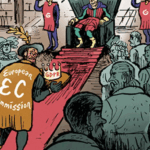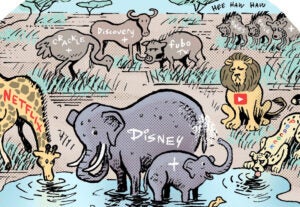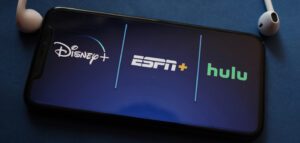“On TV & Video” is a column exploring opportunities and challenges in advanced TV and video.
Ad-supported video on demand is growing, but that doesn’t mean viewers aren’t still consuming live linear content.
Live TV made up 21% of the billions of hours people spent watching content on a Fire TV device in February alone.
Fact is, TV audiences still consume live linear content – they just want to be able to watch it on their own terms, said Matt Hill, head of Fire device monetization at Amazon.
But there’s fragmentation in terms of how people can access streaming content. Amazon is trying to close that gap through its Fire TV interface by creating an “aggregated experience as an easy leaping point” to any piece of content, Hill said, including live linear content.
Fire TV offers content recommendation and sponsored tiles, which are ad placements that appear on the Fire TV user interface to promote content and apps.
“We’re treating our UI approach the same way we’re talking to our advertisers,” Hill said, “[by] focusing on the display products that drive unique reach and engagement to the audiences most important to those brands – in the end, it should be all about content discovery.”
Hill spoke with AdExchanger.
AdExchanger: Why is Fire TV embracing live linear content?
MATT HILL: Live content is one of those categories that instantly translates with viewers. Our industry has all these acronyms for different ways to watch TV over-the-top, but consumers already “get” live content, and there’s a huge demand for it from our Fire TV customers.
When it comes to cord-cutters who have moved over to the connected TV space, though, there’s a lot of fragmentation in TV content, and it’s not easy to find live shows without having to move to a specific app or interface.
AdExchanger Daily
Get our editors’ roundup delivered to your inbox every weekday.
Daily Roundup
That’s what we’re trying to solve for, and why we decided to place live content front and center on Fire TV user interfaces. It’s a simplified experience that’s also driving a lot of [brand] demand for us.
Amazon already airs live content, like Thursday Night Football, on Prime Video. What’s changing now?
Prime Video has had Thursday Night Football for years, but it was a shared live linear experience. Fox was broadcasting for linear audiences, while Prime Video brought the connected TV experience. Now, Prime Video will be the singular home for the game.
We’ve also changed our content distribution approach within our user interface to lead with the content we’re trying to engage viewers with, rather than the apps they’d need to download [for certain shows]. Fire TV is bringing all its content together to create a service where there’s optionality for the customer.
There’s also a corollary with Fire TV’s news experience. The news app on Fire TV has both a live and a local component, so we’ve seen a giant increase in demand. We’ve now scaled to 300 [soon to be 330] localized channels that hit 94% of the DMAs in the US.
When you say “corollary,” does that mean sports is driving higher buy-side demand than news for Fire TV?
Sports obviously has a broader audience when you look at the number of customers that tune in to those events, especially considering all the different leagues and sports out there that drive weekly tune-in.
News is a little different because it tends to be more of a daily rather than weekly habit, so we’re seeing a lot of engagement there on a daily basis.
Sports brings large buckets of unique audiences to the table, but news viewers are a highly engaged, destination-oriented user base, and that daily habit actually creates a compelling audience reach that’s attractive to brands and advertisers, too.
How is Fire TV monetizing its live linear content experience?
An engaged user base across 150 million devices sold worldwide really resonates with brands and advertisers – not just because of audience size but because they can get tactical about exactly who they’re trying to reach and reach them incrementally via streaming and linear.
We also have a product in beta: Fire TV Sponsored Live Content Row. Each tile unit shows an event happening right then, allowing users to access them directly with a click, rather than having to send users away from the home UI through a designated “live experience” or a specific app. It’s a one-click leap-off point.
It’s a very engaging product that’s worked really well in the testing phase, including during the Winter Olympics and the Super Bowl in February. We partnered with NBCU and Peacock to turn a content row into a banner for the Olympics, and we’ve gotten positive inputs from the beta product so far in addition to interest from other advertisers trying to engage with that beta.
How does this “one-click leap-off” approach for sponsored content segue into shoppability?
There’s engagement on the content side, but there’s also engagement on the video side. Interactive video ads can turn a traditionally passive experience into an engaging one.
We have [shoppable] ads on our Freevee service. Viewers can opt for a one-click add-to-cart or use their voice to add an item to their Alexa shopping list, and then get right back to their content.
Is Amazon working with any other ecommerce partners, or keeping shopping experiences within Amazon’s properties?
[It’s only Amazon] because that’s easiest for users. We recognize a user, allow them to engage with and add products to their cart and then get them right back to what they were doing.
Integrating with other services creates additional steps for the customer. I’m not saying that’s something we wouldn’t be interested in – there’s a lot of opportunity there – but right now we’re sticking with what is the simplest setup for the customer.
This interview has been edited and condensed.
















